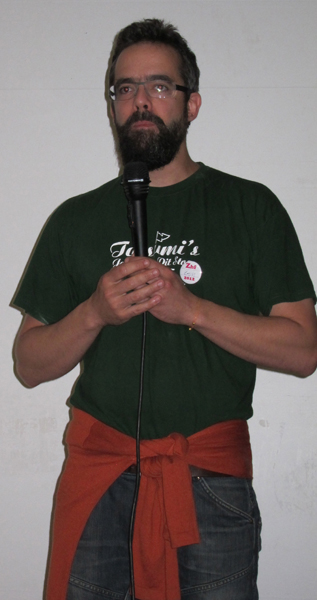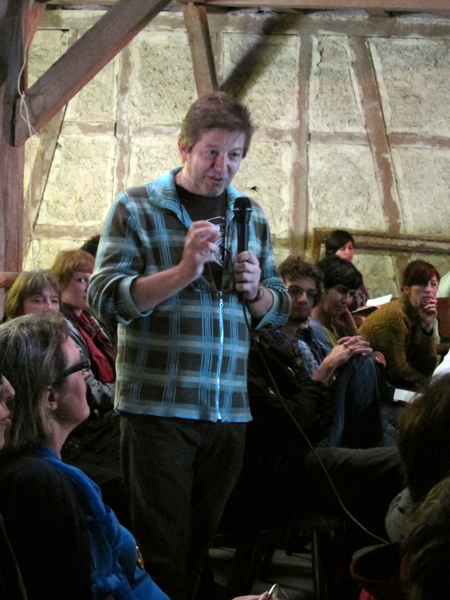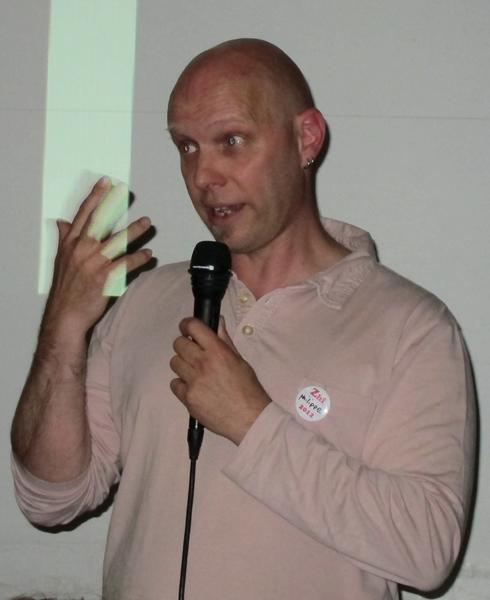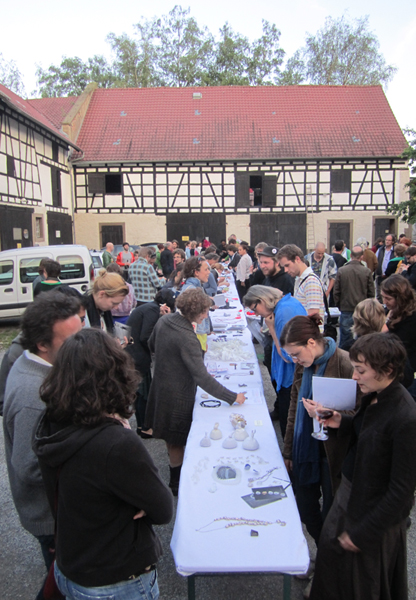Conferences are strange creatures. They lure you into the depths and then drown you in overstimulation. And this conference had all of the allure – the presence of some of the best thinkers in the field – and all of the overstimulation, tempered somewhat by a farmyard location and a leisurely pace. I have complained about the location of conferences in the past and as I arrived in Zimmerhof for Zimmerhof 2012: The Public and Private Lives of Jewellery (June 7-10, 2012) I wondered if a barn with a courtyard was really the appropriate place to discuss contemporary jewelry. Would this site somehow diminish the importance of the subject matter? Well, it turns out that while it did take place in a barn, the barn belonged to a castle, a fact that added a certain aristocratic charm and legitimacy to the event. Plus, I have to say that sitting around picnic tables chatting and moving at the pace of the farmyard, especially over lunch and dinner, really helped to digest the talks. Now I am convinced that this is a wonderful place to hold a conference.

Zimmerhof is a tiny town along the train line between Stuttgart and Mannheim in Germany. Yvonne von Rachnitz, along with Ulrich Haass and Ursula Woerner, runs the 44-year-old Zimmerhof organization that puts on this annual conference. Yvonne’s family owns the castle, mentioned earlier and the barn where the event takes place. Before this year I had not heard of Zimmerhof because it mainly served the German community and was conducted in German. But a year or so ago the organizers decided to change the language, first to a combination of German and English and then this year, to do the entire conference in English. This created certain problems for many of the speakers and those of the audience who were not native English speakers and even I had a hard time understanding some of them. However, the change of language and the addition of an international audience probably breathed some new life into the event.

Benjamin Lignel was the MC for the conference and in his new bearded guise he set just the right tone and did a wonderful job. Brune Boyer and Emmanuel Lacoste worked with Lignel to organize the content of the conference and it was very well conceived. The title was ‘The public and private lives of jewellery’ and the program investigated the many places where jewelry lives. Their hope was to tease out the challenges and issues that have come up around jewelry practices and especially those that deal with the conflicts raised between the private and the public. The first full day was spent on the different public spaces – the museum, the street, the pages of the book, collector wearing jewelry and so on – and the last full day on private or intimate places – the tattoo, pilgrim badges, collectors drawers and so on. By having the lecturers describe the various ways in which we encounter jewelry the program questioned assumptions and clarified answers.




My lasting memories about the conference will probably revolve around the courtyard and the vegetarian meals served by the students from the Pforzheim culinary academy. The food and the setting were simple. The conversations were interwoven with thoughts of table companions and lecturers (often the same person). I will remember meeting some excellent people whom I hope I will see again. I was lured in by the program, but I was seduced by the people.




